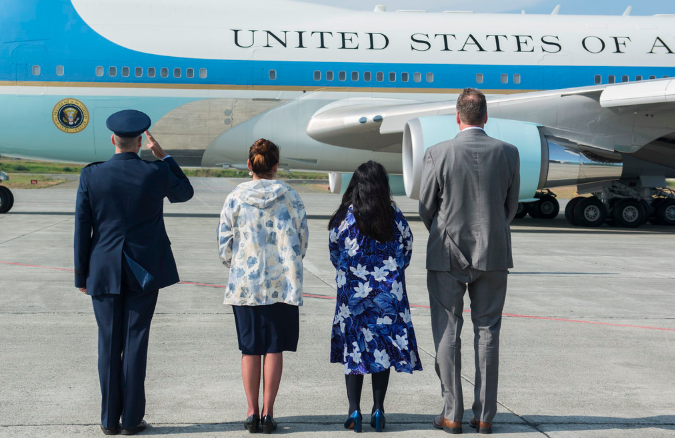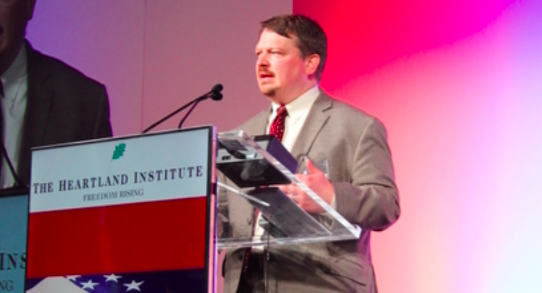Andrew Halcro, chief executive officer of the Anchorage Community Development Authority has known about Nordstrom’s impending closure for many months, but wisely kept the bad news to himself while he tried to convince the company to stay in downtown Anchorage.
But even for the immaculate man appointed by Mayor Ethan Berkowitz to develop Anchorage, there was no convincing the executives of the luxury department store: Nordstrom is closing stores in poor markets, and opening them in others. Halcro will have to find another tenant after Nordstrom leaves in September after 44 years.
The chain has about 119 stores, a small footprint compared to national department stores like Macy’s (641) or Dillard’s (292). And the high-end company makes careful moves.
Halcro blamed the Nordstrom departure on a demographic and cultural change in Anchorage and said that “traditional brick-and-mortar stores like Nordstrom have suffered” because of that.
He’s right. Anchorage has changed. Nordstrom had already changed up its merchandise at the Anchorage store to meet the needs of the change. But that wasn’t enough.
What Halcro might have said (but won’t say) was that the demographic and cultural change in Anchorage has been declining during the Berkowitz Administration. Crime is still off the charts in the city many refer to as Los Anchorage. Drug abuse is openly pursued on the streets downtown, bathrooms are unsafe, parking garages are smelly, and an increasingly dangerous “street people” scene has caused shoppers to go elsewhere. Pot stores, like the one that Halcro opened, are the only sign of a thriving business trend. That, plus food trucks.
“We’re “bookending” downtown with vibrant spaces – K Street Eats and The Rooftop. This is just one way we are revitalizing the community,” Halcro’s agency’s website says.
The “bookend” called The Rooftop was a Halcro creation that converted parking spaces at the top of the 5th Avenue Parking Garage, which his agency also owns and runs, into a playpen for millennials — a basketball court in the summer and ice skating rink in the winter. It generates no revenue, and is not widely used, but it replaced downtown parking with a concrete park that is surrounded by jail-yard style fencing.
As for K Street Eats, it’s a food truck pod that has relocated to E Street. It’s seasonal. Tourists don’t really know about it and most Anchorage residents could not tell you where it is. But it’s nice to see young entrepreneurs bringing energy into the downtown scene.
That’s not the same kind of economic magnet as a Nordstrom. No one is going downtown for a food truck and a pick-up game of basketball.
The Nordstrom chain is thriving in other locations, just not Anchorage.
Overall, like other department stores, Nordstrom’s is aware there are storm clouds on the horizon for big real estate footprints in high-rent malls or downtowns. It has to make smart moves.
Last month, Nordstrom Inc. stock fell 10.7 on the news that the first-quarter sales were below expectations. The company earned $37 million in the quarter, compared with $87 million the year before.
Online sales now make up over 30 percent of the company’s business. Off-price sales at The Rack are also a large part of the company’s portfolio, and it’s four-wall stores now make up just half of over revenue.
Since 2017, it closed two stores in Southern California, one in the D.C. downtown area, and another in Salem, Oregon.
But still, Nordstrom is opening stores in communities that are rising: New York City is where the new flagship store is, and Norwalk, Conn. opens this year. The entire list of Nordstrom store openings are here.
For Anchorage, it’s a symbolic blow. People sometimes would apologize for the dusty, industrial nature of Alaska’s biggest city, but end the sentence by saying, “But at least we have a Nordstrom.” It meant that a high-end company was banking on the city being a good investment.
While Halcro was building a non-revenue basketball court, a food truck pod, and his own pot store, liberal politicos with long knives chased the Legislature out of the downtown Legislative Information Office. Democrats labeled it the Taj Mahawker, a moniker making fun of former Rep. Mike Hawker, a Republican who led the renovation of the old building, which had been a real eyesore.
No good deed goes unpunished; although the renovation was a great addition to downtown Anchorage during a time when recession was hitting, and while it could have sparked retail and economic growth nearby. The Taj Mahawker name stuck and shamed the Legislature into moving to more modest space in Midtown, where they cannot actually convene a special session.
Then, the Anchorage Community Development Authority swooped in and bought that Taj Mahawker building for $14 million from a bank in Florida that just wanted to get out of its Anchorage investment.
The ACDA inked an agreement to move the Anchorage Police Department’s command center into it.
Now controlled by the ACDA, no liberal called it Taj Mahawker luxury accommodations anymore. The Berkowitz Administration now owns it, essentially. And the police never really moved in. They may have an office there, but they’re still out on Elmore. Police should not locate their headquarters in glass buildings, it seems.
The liberal intelligentsia moved on to other topics, and the municipality is losing millions of dollars in property taxes it could have had, if it had allowed Calista Corp. to buy that building, as it plainly told the Anchorage Assembly it wished to do. Instead, the building is in government hands.
Halcro also has another problem, and it’s right next door to the soon-to-be-vacant Nordstrom: Just last year he announced that the parking lot that serves Nordstrom (and JC Penney and the Fifth Avenue Mall) will need to be torn down, and at the time he thought a combination of residential, retail, and perhaps even a hotel could go on that spot, along with some parking. Before he gets to that project, he’ll need to figure out tenancy for the Nordstrom building.
The Anchorage Community Development Authority is beginning to look like it’s the owner of a few too many vacancies downtown. The ACDA has created food truck pods and basketball courts. But it’s going to have to deliver some big wins soon, before retailers and property owners rush for the exits.









